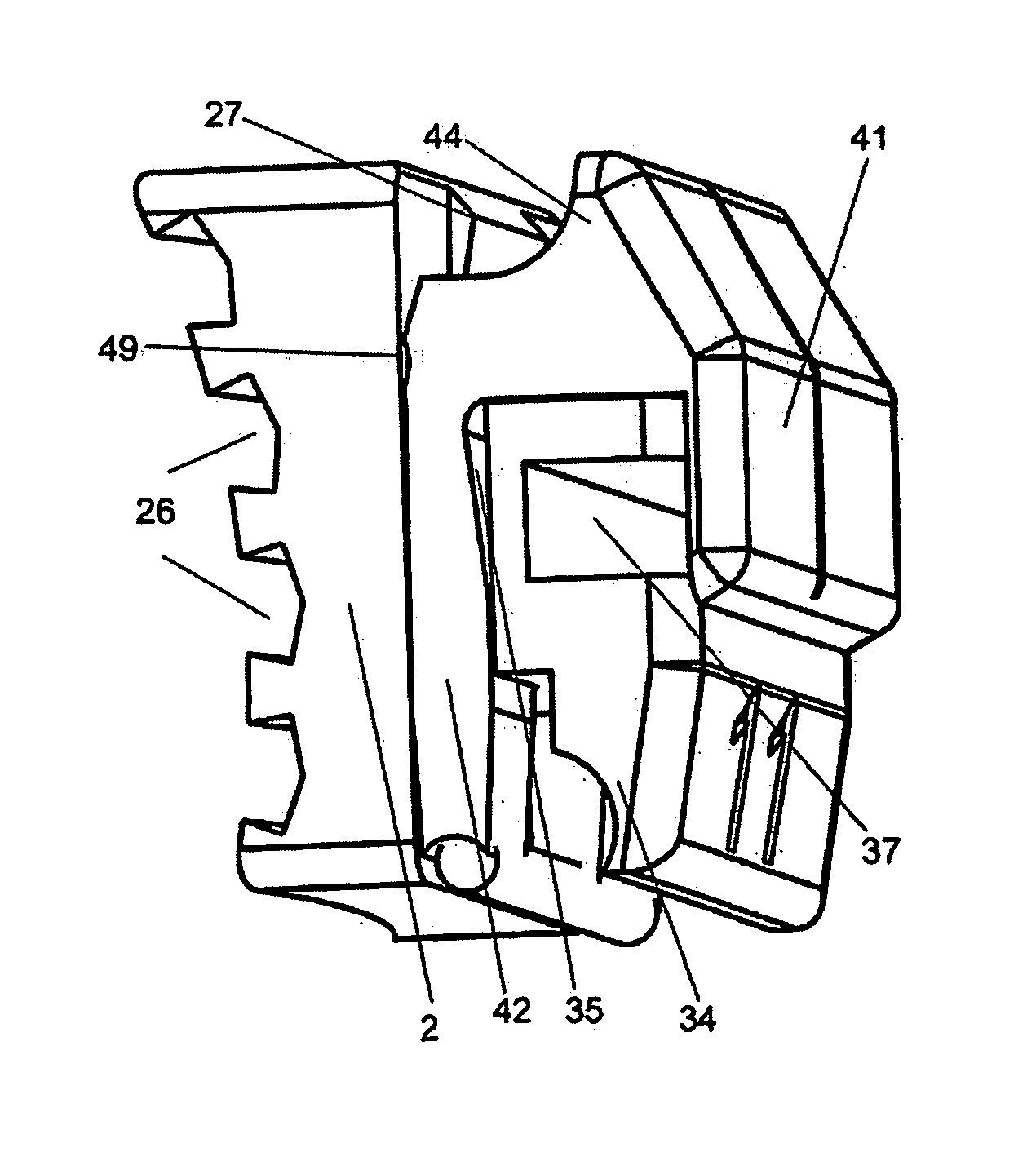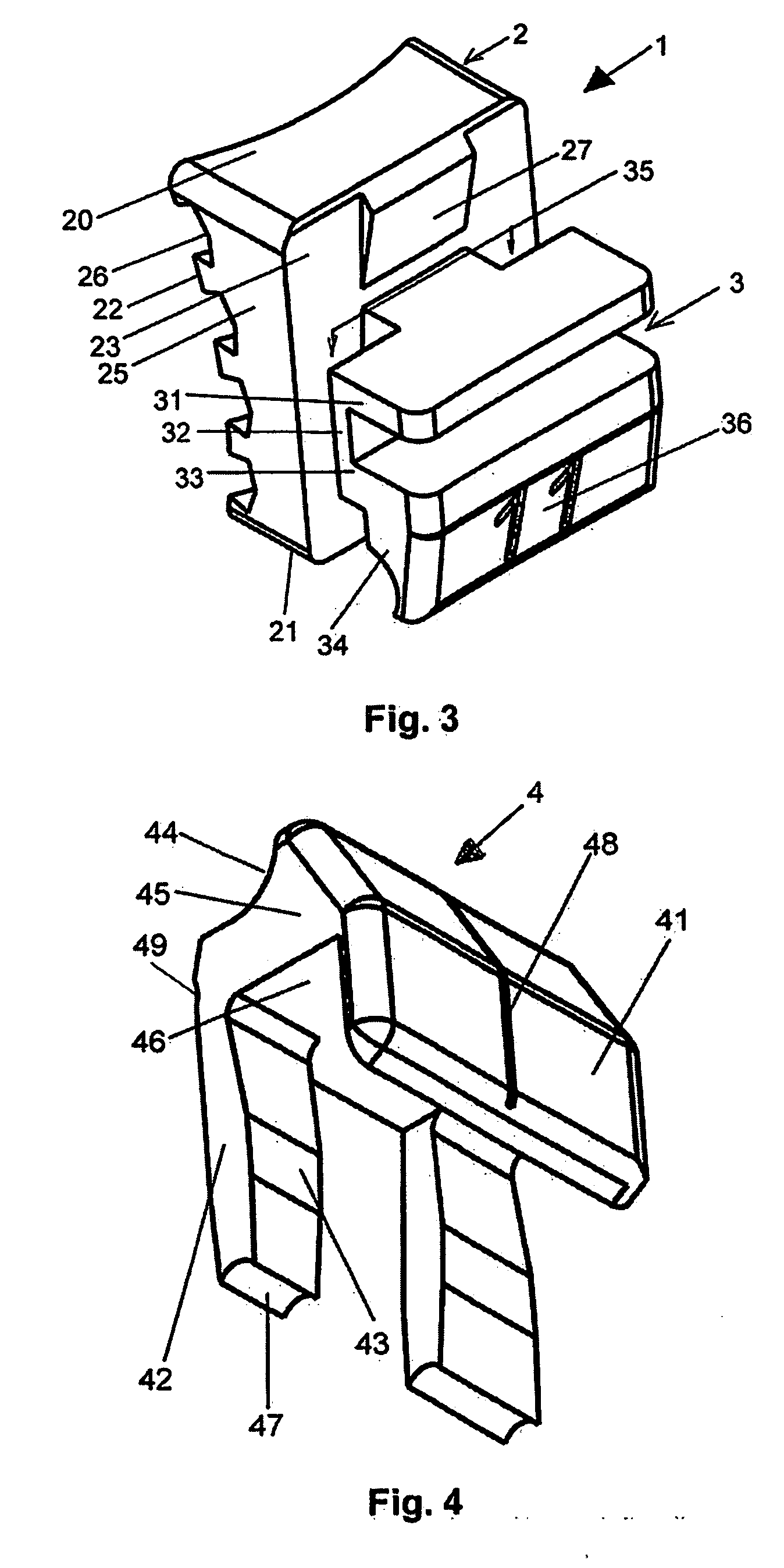Self-ligating bracket comprising lateral runners
- Summary
- Abstract
- Description
- Claims
- Application Information
AI Technical Summary
Benefits of technology
Problems solved by technology
Method used
Image
Examples
Embodiment Construction
[0008] The self-ligating bracket with lateral runners for orthodontic treatment is composed of two assembled pieces; the first, called body, contains the basic devices of any bracket, such as the fastening or cementing to the tooth means, the archs' groove in the mesial-distal direction, flanges for conventional wire or elastomers ligatures and, lastly, grooves that are built laterally to serve as guides or tracks over which runners, that the second piece of the bracket have, slide, the so-called closure, which is basically composed of the closing cap, body of the closure, and the said lateral runners. There are two possibilities once the two pieces are assembled: first, that both parts stay joined / connected so that a retention bar that impedes the dismantling of the runners base is always welded on, which would ensure the useful space for the arch, defined by the groove and the closing cap, to be constant; the second, is to leave the runners' base free so that there is the possibil...
PUM
 Login to View More
Login to View More Abstract
Description
Claims
Application Information
 Login to View More
Login to View More - R&D
- Intellectual Property
- Life Sciences
- Materials
- Tech Scout
- Unparalleled Data Quality
- Higher Quality Content
- 60% Fewer Hallucinations
Browse by: Latest US Patents, China's latest patents, Technical Efficacy Thesaurus, Application Domain, Technology Topic, Popular Technical Reports.
© 2025 PatSnap. All rights reserved.Legal|Privacy policy|Modern Slavery Act Transparency Statement|Sitemap|About US| Contact US: help@patsnap.com



